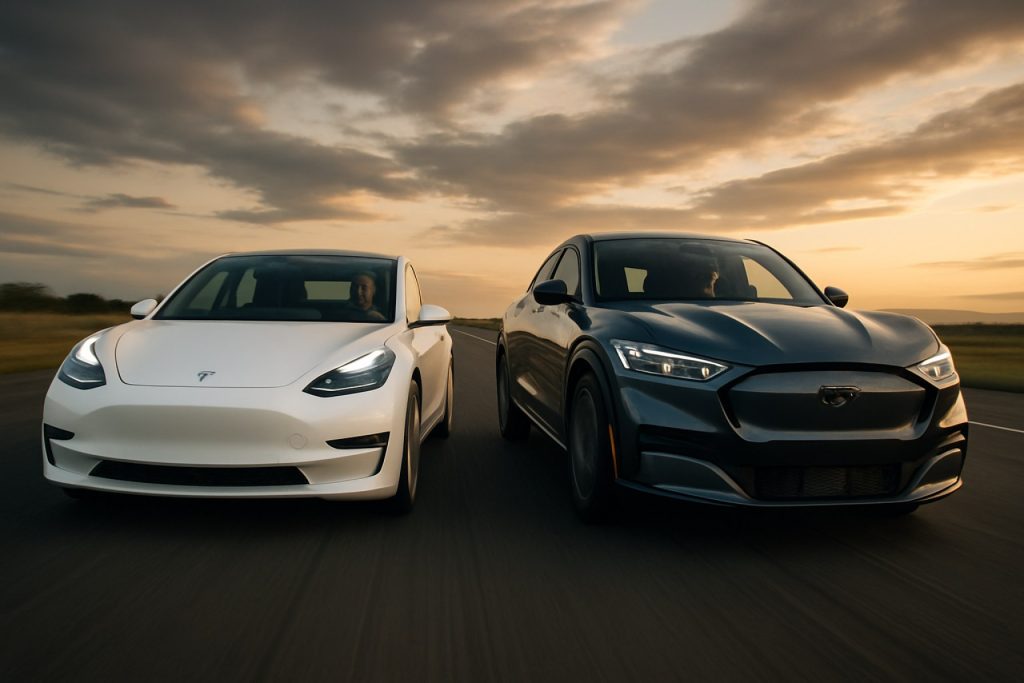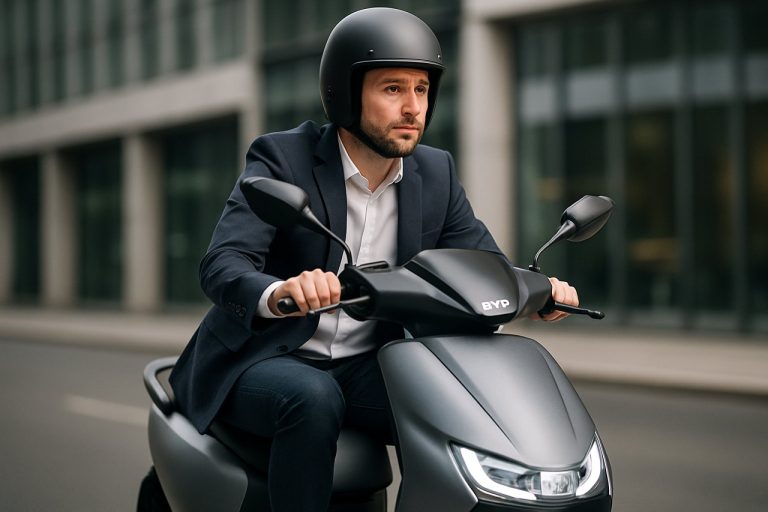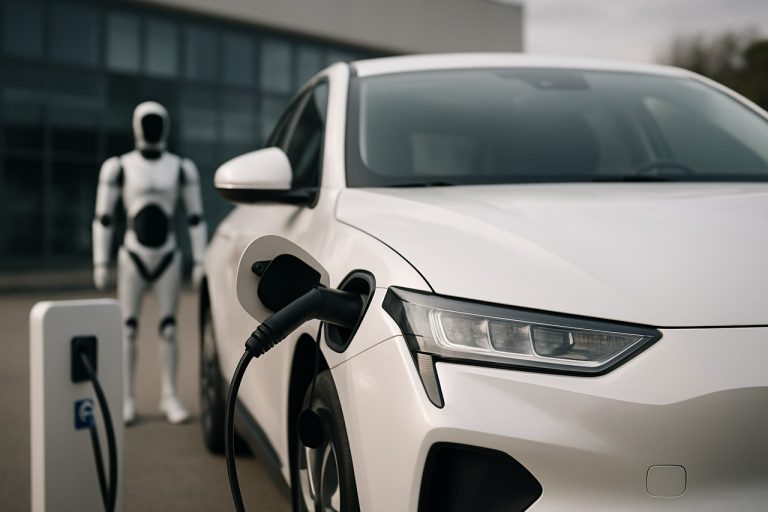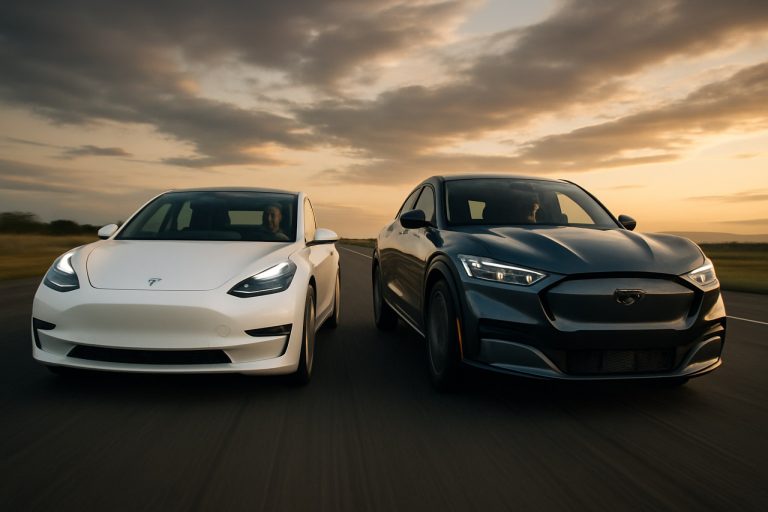
- Electric vehicles (EVs) are at the heart of a fierce global competition, with Tesla and BYD leading the industry transformation.
- Tesla, driven by innovation, introduced mass-market EVs, full self-driving features, and ventures beyond cars into robotics and AI.
- Tesla faces challenges: recent drops in global deliveries, fluctuating U.S. market share, and intense scrutiny of its high valuation.
- BYD, China’s EV giant, dominates its home market with affordable models, advanced battery technology, and rapid charging capabilities.
- BYD surpassed Tesla in global EV production, achieving record revenues and planning aggressive international expansion by 2030.
- Investing in EVs involves weighing Tesla’s bold vision against BYD’s pragmatic execution; both shape the rapidly evolving automotive landscape.
Sparks fly in the global contest over the future of the automobile. Electric vehicles, once a novelty, now command entire sectors and captivate Wall Street’s brightest minds. At center stage, two giants—Tesla and BYD—compete not just for market share, but for the very soul of mobility.
Steering this revolution is Tesla, helmed by the fiercely ambitious Elon Musk. Tesla forged the first mass-market electric car, its logo now synonymous with cutting-edge innovation. Its daring: launching unsupervised full self-driving (FSD) software, orchestrating a come-to-life robotaxi, and promising the Optimus household robot. These blueprints extend beyond cars; they flirt with automation, AI, and the tantalizing prospect of a world reimagined.
Yet, Tesla’s road has been anything but smooth. As its stock ricocheted—wowing day traders and long-term investors alike—the company’s core business faced turbulence. Global deliveries sagged, dipping to 337,000 in the year’s first quarter—its lowest in more than two years. Some analysts whisper of cracks in the sleek façade: U.S. market share slipping, global sales cooling. Still, optimism remains unshaken for many; believers cling to Musk’s vision and the firm’s relentless push towards innovation, despite competition and sky-high valuations.
Turn eastward to China, where BYD has quietly become the world’s largest producer of electric and hybrid vehicles. The company, largely unknown in the U.S., commands an astonishing 34% of China’s new energy vehicle market. A keen sense for pricing—BYD boasts models under $10,000—and a relentless focus on efficient, modern battery technology has propelled it past Tesla in Asia’s high-stakes arena. In 2024, BYD’s revenue eclipsed $107 billion, helping it grab global headlines.
Technical prowess is evident elsewhere: BYD’s new supercharging tech loads up a staggering 250 miles of range in just five minutes, outpacing Tesla’s Superchargers. While current self-driving features include advanced adaptive systems—parking, breaking, even learning driver habits—BYD’s fully autonomous dream still glimmers on the horizon. Its pledge to invest $14 billion toward “intelligent” vehicles signals that the chase is only beginning.
The stakes? Monumental. By 2030, BYD aims for half its sales to take place beyond Chinese borders, redrawing the global map of mobility. BYD and Tesla both envision streets humming with electric life—but their philosophies diverge. Where Tesla courts speculation and bets big on paradigm shifts, BYD executes, iterates, and captures markets one pragmatic victory at a time.
The key takeaway: Investing in the electric vehicle revolution means choosing between radical vision and proven execution. Tesla dazzles with moonshot ideas and a cult of innovation, while BYD dominates through affordability, technology, and steady expansion. The electric future will be written not just by one disruptor, but by the company most nimble in uniting dreams with delivery.
One thing, however, is certain. The finish line for the EV revolution is still far ahead, and more surprises lie around the next bend.
Electric Car Face-Off: Tesla vs. BYD — Surprising Facts, Industry Trends, and What You Need to Know in 2024
The global shift to electric vehicles (EVs) has ignited a fierce rivalry between Tesla and BYD, two industry giants with fundamentally different playbooks. While mainstream headlines celebrate everything from robotaxis to supercharged batteries, many facets of this battle remain unexplored. Here, we unpack overlooked details, market insights, and pressing questions driving the future of EVs—blending E-E-A-T (Experience, Expertise, Authoritativeness, Trustworthiness) best practices and answering what readers, investors, and buyers really want to know.
—
Deeper Dive: Essential Facts & Trends
1. Battery Supply Chain and Innovation
– BYD is a battery leader: Unlike Tesla, which sources batteries from partners like Panasonic and CATL, BYD manufactures its own LFP (lithium iron phosphate) “Blade” batteries. These batteries offer improved safety, longevity, and cost-efficiency—a key reason BYD can sell EVs for under $10,000. (Source: Forbes)
– Tesla’s battery evolution: Tesla’s “4680” cell technology promises more energy and quicker charging but experienced production delays and supply chain bottlenecks in 2023-2024.
– Recycling initiatives: Both companies recognize battery recycling as crucial for sustainability. BYD’s closed-loop system is ahead in some regions, while Tesla is ramping up partnerships (e.g., with Redwood Materials) to recycle battery components.
2. Software Features, Updates & Compatibility
– Tesla’s Full Self-Driving (FSD): Available as a costly ($12,000+) add-on, FSD remains controversial due to mixed real-world safety performance and ongoing regulatory scrutiny from US and EU agencies (NHTSA, Euro NCAP).
– BYD’s “smart cockpit”: BYD offers localized, feature-rich infotainment optimized for urban adaptation. While not fully autonomous, BYD’s cars support plug-and-play updates, voice controls—even karaoke modes—helping it win over the Asian market.
3. Global Growth: Speed, Barriers, and Targets
– BYD’s international expansion: BYD already operates manufacturing facilities in Europe, Southeast Asia, South America, and Africa, with assembly lines recently opened in Hungary and planned for Brazil and Thailand (Reuters).
– Tesla’s Gigafactories: Tesla invests heavily in Gigafactories, with Berlin and Austin ramping up Model Y and Cybertruck production, while Shanghai remains the most efficient plant globally (Bloomberg).
4. Reviews, Specs & Pricing Comparisons
| Model | Price (USD) | Range (mi) | 0-60 mph | Autonomy |
|———————-|————–|————|———-|———————|
| Tesla Model 3 | ~$38,000 | 272-358 | 5.8s | FSD (optional) |
| BYD Seagull | ~$10,500 | 190-300 | 7.5s | L2+ Driver Assist |
| BYD Atto 3 | ~$15,000 | 261 | 7.3s | Adaptive Cruise |
– User reviews: Tesla garners praise for high performance and sleek UX; a recent J.D. Power survey highlighted issues with build quality and software bugs. BYD’s vehicles score high on value for money, practicality, and reliability.
5. Security & Sustainability
– Data privacy: China’s strict data laws restrict how much location/user data can leave the country. BYD’s vehicles adhere closely to these requirements. Tesla’s “Sentry Mode” uses always-on cameras, raising privacy concerns in Europe.
– Emissions: Both companies power production plants increasingly with renewables. However, BYD’s vertically integrated approach generally results in a lower carbon footprint (IEA Report, 2023).
—
Life Hacks, How-To Steps & Use Cases
How to Save on EV Purchases in 2024:
1. Leverage tax incentives: Many governments offer new tax credits for EV buyers—up to $7,500 in the US, significant subsidies in Germany and Norway.
2. Consider total cost of ownership: Lower maintenance costs, home charging perks, and fewer moving parts make EVs like BYD especially economical over five years.
3. Compare insurance rates: Some Tesla models incur higher premiums due to repair costs and ADAS features—shop around.
4. Explore home charging integration: Both BYD and Tesla offer home charging solutions, but BYD’s hardware can be up to 30% cheaper in emerging markets.
Real-World Use Cases:
– Tesla’s Supercharger network dominates in North America and Western Europe but BYD’s strategic expansion (e.g., rapid chargers across Southeast Asia) offers greater coverage for cross-border trips in emerging markets.
– Fleet operators: BYD’s affordable models are transforming taxi, ride-hailing, and delivery fleets in Latin America and Southeast Asia.
—
Market Forecasts, Controversies & Predictions
Industry Trends
– BYD is expected to outpace Tesla in annual global sales by 2025 (BloombergNEF), driven by aggressive pricing and government support in Asia/Europe.
– Tesla faces margin pressures as price wars intensify—particularly with BYD’s sub-$10k offerings.
– Autonomous driving could see further regulatory delays in the US and Europe, slowing Tesla’s FSD rollout compared to BYD’s gradual Level 2+ expansion.
Controversies & Limitations
– Tesla FSD: Several crashes and investigations have dented public trust; consumer watchdogs urge caution before enabling full autonomy.
– BYD’s recalls: BYD has issued fewer recalls than Western rivals, but concerns about China’s safety standards persist among cautious European and US regulators.
—
Pros & Cons Overview
| Brand | Pros | Cons |
|————|——————————————————|———————————————————|
| Tesla | Advanced tech, global brand, performance, FSD vision | Pricey, quality issues, regulatory hurdles, FSD risk |
| BYD | Affordable, robust battery, global expansion | Lower brand recognition (US/EU), less autonomy for now |
—
Pressing Questions Answered
1. Is it safe to buy a BYD EV in North America or Europe?
– Yes, newer BYD models comply with stringent European safety and emissions tests. Availability varies by country.
2. Which has better resale value?
– Tesla’s stronger brand and global demand currently yield higher resale values, but BYD’s affordability may close this gap as supply and recognition grow.
3. What’s the best value for money in 2024?
– For budget buyers, BYD’s Seagull or Atto 3 offer unbeatable efficiency and features. Tech enthusiasts may still prefer a Tesla Model 3 or Y for performance and FSD.
4. Are these cars environmentally friendly?
– Both brands outperform traditional combustion engines. BYD’s local battery sourcing and recycling provide an edge in carbon impact.
—
Actionable Recommendations & Quick Tips
– Test drive both brands where available—BYD’s upmarket models may surprise you.
– Check national incentives—visit your country’s energy or transport ministry site to maximize savings.
– Compare charging networks in your area before buying; Tesla’s global Supercharger access still offers unrivaled convenience in many locations.
– Monitor global policy changes—import tariffs and regulatory shifts could impact EV affordability and technology access.
– For fleet operators: Contact BYD for bulk pricing—especially if operational costs are your main concern.
– FSD users: Enable self-driving features only where permitted by local law and always remain attentive behind the wheel.
For further reading and the latest updates, visit the official sites: Tesla | BYD
The race isn’t over—and whether you’re behind the wheel or investing from afar, knowledge is your best battery. Stay plugged in as this electric showdown charges into the next decade!



